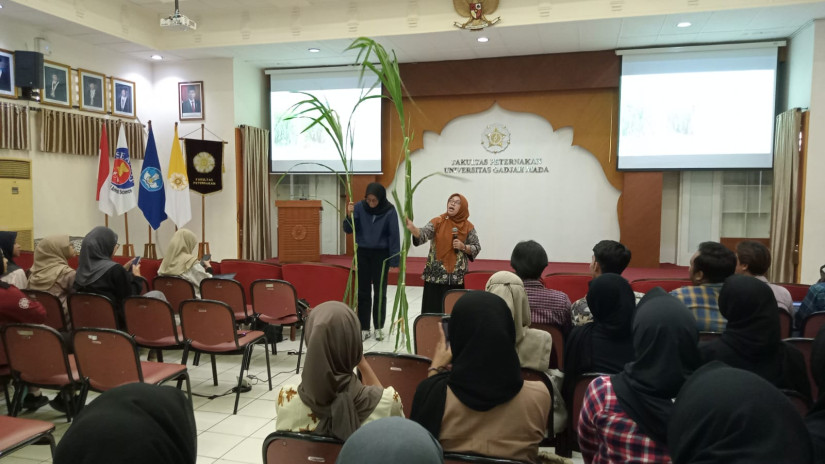
The issue of self-sufficiency in animal feed in Indonesia remains a challenge. For instance, in East Nusa Tenggara and West Nusa Tenggara, regions known as cattle breeding centers, animal feed quality and quantity still need to be improved.
To address this issue, a researcher from the UGM Faculty of Animal Science (Animal Science UGM), Professor Nafiatul Umami, introduced Gama Umami grass to over 50 students who are candidates for the 2024 UGM Community Service Program (KKN-PPM) on Thursday (Jun 6).
Through this introduction, it is hoped that students with KKN projects involving the planting of Gama Umami grass will not face issues in the field. Such problems might arise, for example, when taking the grass outside Java due to different soil conditions.
“We need to guide the students,” she said.
Professor Umami explained several advantages of Gama Umami grass. For instance, its leaves can reach a length of 1.3 meters, it can grow upright up to a height of 3.7 meters, it has fewer hairs compared to elephant grass, its stalks are soft and sweet, which makes it highly palatable, and it has 41-50 tillers.
“Its fresh production can reach 30-50 kg/m², which is higher than local elephant grass that reaches 30 kg/m²,” she explained.
Gama Umami grass is derived from a mutation of elephant grass that has been irradiated with gamma rays, resulting in grass superior to its parent.
Elephant grass was chosen because it is a superior type favored by ruminant livestock and suitable for development in Indonesia, a tropical climate country. Gama Umami grass’s production yield is higher than that of local elephant grass, and it can be harvested up to six times a year.
Author: Animal Science UGM/Satria

